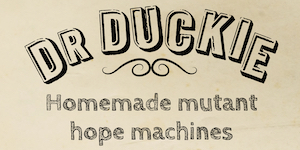This week, the final episode of Drag Queens of London went out on London Live. The climax of the series – an eight-part documentary about drag performers in the capital today – was pegged to the finale of Trannyshack Academy, a talent contest held at iconic Soho cabaret bar Madame Jojo’s. This year’s winner was Ruby Wednesday, a sympathetic but relatively untried member of Familyyy Fierce, an alt-drag troupe that has been among the show’s subjects from the start.
This should have made for a sweet and rousing note on which to end the show’s run. But it was hollowed out and rendered banal by the fact that we saw a total of 34 seconds of the winning performance, and some of that was muddied by voiceover commentary. This was typical of a series that promised to shine a light on those participating in the London drag scene – arguably the most diverse and dynamic in the world – but showed next to no interest in drag performance itself.
That’s not to say there was nothing of value in Drag Queens of London. Over its eight episodes, it made clear how much imagination, planning and hard work is required for successful drag performance; that there is considerable variety across the London scene in terms of style, politics and personalities; that drag can be a source of personal strength, pride and self-understanding; and that deep friendship underpins many aspects of the scene.
Perhaps most valuably for a series transmitted on a mainstream channel – the show was part of the launch line-up for London Live, a digital station targeting a general audience in the capital and part of the same media family as the Evening Standard – Drag Queens of London didn’t sensationalise the scene’s members on account of their LGBT status. It approached them as human beings worthy of the same treatment as any other TV documentary subject.
But that was also the problem. Like so much of what now passes for TV documentary-making, Drag Queens of London was all about micro-scale events in its subjects’ lives, which often felt manufactured and were almost invariably couched as win/lose propositions. Will a date go well or badly? Will a conversation result in a rift or a reconciliation? Will a project’s outcome confirm someone as a success or brand them a failure?
Grabbing a coffee and catch-up with a mate becomes a high-stakes, make-or-break enterprise reeking of contrived narcissistic psychodrama; the upshot of each trumped-up showdown or heart-to-heart is decreed inspirational or cataclysmic and slathered with sentimental music to match. Completely absent is any acknowledgement that these lives take place in a broader political, economic or historical context. (I’ve referred to this elsewhere as the ‘Thatcherite turn’ in documentary-making.)
This strategy is one thing in a show like Made in Chelsea, whose protagonists’ lives seem genuinely to consist of nothing other than contrived narcissistic psychodrama. Under conditions of thoughtless privilege, the relentless banality almost takes on the quality of satire. But the stars of Drag Queens of London are – yes! – drag queens. Sure, many have bitchy, flaky or histrionic moments that make for good telly, but what supposedly unites them is the creation of creative, compelling entertainment inspired by experiences of exclusion from mainstream norms. Why not show some of that?
Yet week after week, the show relegated actual drag performance to background colour, focusing instead on banal squabbles and tangential escapades, with an occasional nod to homophobia here and empowerment there. The programme-makers didn’t even have confidence in such material per se, bolstering it with incessant to-camera commentary from the participants insisting on an occasion’s dramatic significance or delivering scripted-sounding catty comments.
The problem isn’t that drag queens were demonised or individuals stitched up. The problem is that this was a rare opportunity to showcase a much-misunderstood queer underground art form to a mainstream audience, enhancing appreciation for its distinctive qualities of glamour, satire and defiance and boosting understanding of the practical and psychological contexts it grows out of.
In addition to showcasing the actual turns, the series could have shown us how the performers create their looks and unpacked with real depth their influences and motivations – not to mention probed where drag sits in relation to the rest of London’s cultural landscape and explored the history of the form and its iconic venues and in the capital.
Drag performance – like any form of creative expression – is an interesting, valuable end in itself. Drag Queens of London presented it as one more way in which people can prove themselves winners or losers. And that makes losers of us all.
UPDATE: On Twitter, James Whitfield (@cupofbeans) makes the excellent point that music rights probably played a part in this – daft of me to overlook that but something the production would surely have been conscious of from the start and should, in my opinion, have found a way around. There are drag acts who use original music, for instance. And if the costs were ultimately too prohibitive then maybe it just wasn’t a goer…


